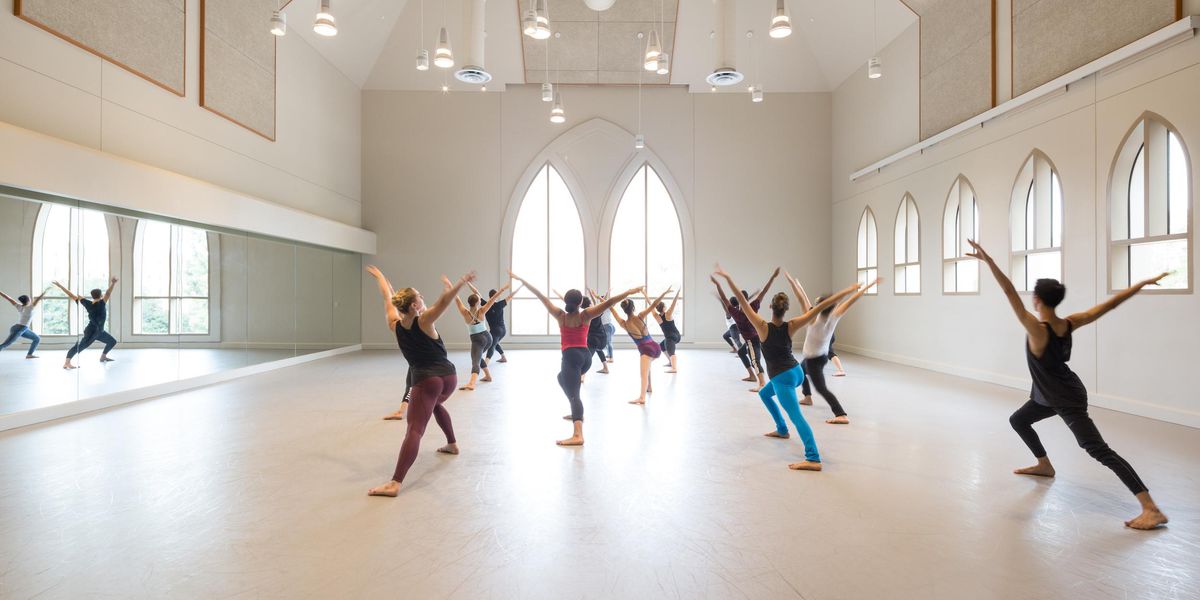On Their Own Terms
Dancers take control by commissioning
their own choreography.
Wendy Whelan and Joshua Beamish rehearsing Conditional Sentences. Photo by Christopher Duggan, Courtesy Whelan.
As a prominent New York City Ballet dancer, Wendy Whelan worked closely with leading choreographers who created original ballets inspired by her long lines and kinetic intelligence. The Kentucky-born ballerina loved the feeling of being “tapped into” as a source of inspiration. To ensure she could relive the experience, late in her career the ballet icon started hiring choreographers to work with her, initiating the creative process herself rather than waiting for a choreographer to hire her.
Dancers who take artistic control by commissioning choreographers turn traditional hierarchies on their head. The experience can be empowering and liberating. But it’s also a new kind of balancing act, requiring dancers to double as impresarios working hard behind the scenes to bring their projects to fruition. The demands are mental as well as physical. But those dancers who do it see it as a way of transforming their careers. “It’s about finding out what you want to explore in continuing your development as a dance artist,” says Whelan.
From Muse to Manager
Going from being told what to do to calling the shots requires great forethought, planning and self-assurance. Your traditional role as interpreter has shifted to one of producer. You are in control of the entire process, from fundraising to forging relationships with presenters who will help you secure a venue for getting the finished work seen. You will need to be a strong communicator with an unwavering belief in your project as you are the one leading a team of artists, starting with the choreographer with whom you wish to work and including sound, lighting and costume designers; tech crews; and publicists. “Find people to collaborate with who support your vision in order to grow and build your ideas,” Whelan says.
Making the Hire
When choosing a choreographer, ideally you want a collaborator, someone confident enough to take direction from you. For her first commission, Toronto indie dancer Danielle Baskerville brought on DA Hoskins, an award-winning Canadian choreographer whom she has danced with for 15 years, often serving as his muse. The resulting abstract work,
Jackie Burroughs is Dead (and what are you going to do about it?), debuted in April to critical acclaim. Baskerville both performed and produced it. “Our work is so collaborative and fluid, so it felt incredibly natural for me to take on the role of the initiator,” Baskerville says. “Commissioning DA was really just the next step in our artistic relationship.”
The classically trained Whelan opted for four contemporary choreographers for her 2014 Restless Creature project. “I chose Kyle Abraham, Brian Brooks, Joshua Beamish and Alejandro Cerrudo to lead me on this new path,” Whelan says. “The experience was incredibly challenging, but that’s what I wanted, to be shaken up. After 30 years with NYCB, I knew I needed that for myself if I wanted to continue growing as an artist, and not as a ballerina.”
Money Matters
Bringing these projects to fruition requires dancers to get strategic about finding funding.
In 2006, maverick contemporary dancer Louise Lecavalier founded Fou Glorieux to commission new works of contemporary dance. To fund the creations, she secured government grants and forged partnerships with presenters interested in backing her work. She paid her choreographers a flat fee based on the length of the piece, plus royalties for each performance.
Whelan also relied on outside funding, including arts foundations and patrons happy to support her endeavor once she personally reached out and told them about it. “I sent a lot of letters and emails seeking support from people I thought might be able to help or guide me toward others who could,” she says.
To fund her commission, Baskerville applied for all three levels of government grants, receiving installments of between CDN$5,000 and CDN$10,000 at a time over a four-year period. She worked accordingly, continuing with her project only when certain she had the funds. She constructed a budget, paying her artists 35 to 40 percent above the minimum CDN$26 hourly wage recommended by Canadian Alliance of Dance Artists, the union on whose board she sits. “It’s why the process took so long,” Baskerville says. “Paying well was important to me.” Baskerville also paid herself for her work behind the scenes. “Not all dancers will think to do that,” she says. “Because we do so much unpaid work already, we start not to know our value.”
The Payoff
“It’s a huge learning curve,” says Baskerville, now considering a future career as an arts administrator as a result of her experience hiring her own choreographer. “You are forced to think of the longevity of the work instead of just the immediate performance. It’s also incredibly empowering because you have a sense of ownership. You’re in control of the future of the work, where it could go next in terms of being seen by others and in what context.”
For Whelan, commissioning choreographers is a way of prolonging her dancing career. “As an older and more established dancer, being the one making the decisions is imperative for me,” Whelan says. “I need to be able to dictate what I do next and how I do it. And more than anything, it’s important to find collaborators who are right for me at this stage of my life.”




